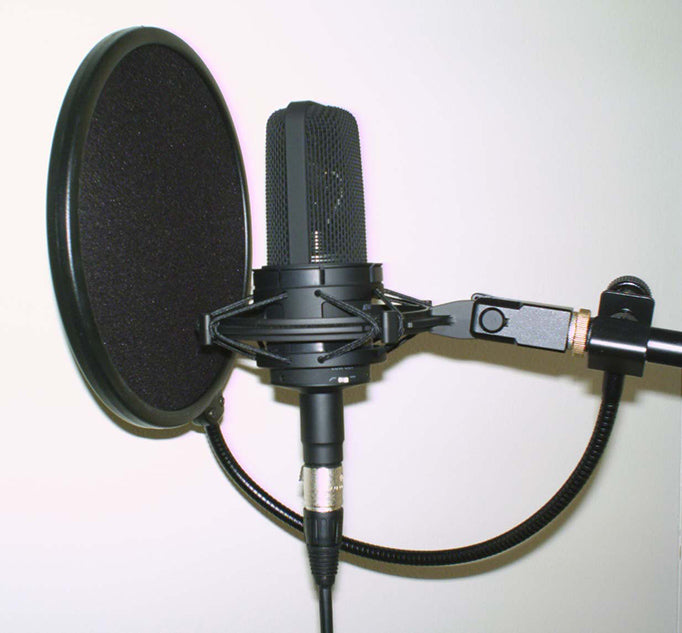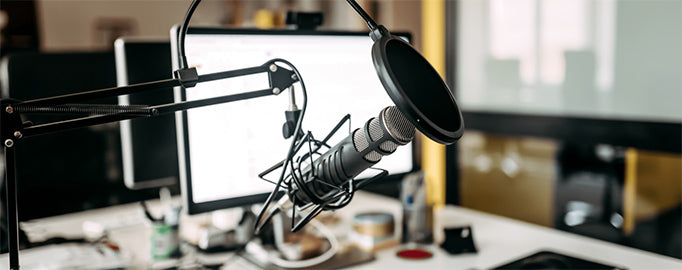How to Choose a Microphone for Podcasting
Listeners usually judge a podcast by its sound quality. No matter the format or topic of your podcast, your listeners are comparing your sound to what they hear on the radio and other podcasts produced by major broadcast outlets. Ironically, your goal is to make your podcast sound so good that no one will notice how it sounds. If people notice the sound, there's probably something wrong with it.
Fortunately, the equipment and techniques needed to produce a professional-sounding for podcast are affordable and available now, and you don't need a spend a lot of money to get professional sound.
But you do need a good room and a good microphone.
Optimizing Your Space for Recording
The room is a sonic hurdle for most podcasters who record in their living space or workspace and don't have access to a professional recording studio. In these spaces, there is usually some background noise from air vents, appliances, computer fans, and other sources that will be audible in a recording. Our ears normally tune out these sounds when we're in the room, but they are noticeable on a recording. Even in a quiet room, reflections from the walls, ceiling, and floor (if it's not carpeted) can cause your voice to sound hollow. You sound like you're in a box because you are in a box. Moving the mic closer to you (within two to 12 inches) helps because it makes your voice louder in relation to the noise and reflections.
Choosing Between a Dynamic and Condenser Microphone
When it comes to microphones, you often hear debate over which type is better: dynamic or condenser. This comes down to two technical characteristics: output level and frequency response. Condenser microphones usually are more sensitive and provide a higher output level. A higher output level can be useful because the signal doesn't need to be amplified as much by the mixer. Amplification adds hiss, and less-expensive mixers generate more of it.
Condenser mics have better response to high frequencies than dynamic mics. This gives condensers a crisp, detailed sound; however, it can be a problem for podcasters who record at home. When you use a condenser mic, you risk picking up too much of the shhh sound from air vents or extra noises from the lips and tongue. Dynamic mics naturally mask these irritants just like a soft-focus filter on a camera hides blemishes.
The Four Characteristics of a Good Podcasting Mic
The microphone is the first link in the connection between you and your audience. But what makes one mic more appropriate for podcasting than another? It really comes down to four things:
1. A cardioid pickup pattern to reduce noise. Cardioid mics are less sensitive to sound from the sides and back, which reduces pickup of room noise and reflections. Tighter pickup patterns like supercardioid or shotgun mics may reject even more noise, but they require your mouth to stay focused on a much smaller area to avoid noticeable variations in level. This is difficult for most people.

2. A pop filter to prevent popping Ps. This can be a layer of acoustically transparent foam inside the mic or an external Popper Stopper™ between you and the microphone. Nothing makes you sound like an amateur more than a pop when you say professional.

3. A shock mount that can filter out low-frequency vibrations. These vibrations can come from touching the table or typing on the keyboard while the mic is live. Some mics have internal rubber isolation mounts around the element, while others rely on an external suspension mount that cradles the mic in elastic straps or bands. A high-pass filter switch on the mic or the mixer adds a second layer of protection from unwanted thumps and bumps, and reduces low-frequency room noise as well.

4. The ability to customize the sound of the mic. Let's face it: some people have a good radio voice, and some don't. Some of us record podcasts in a dedicated studio space, while others have to do it at the dining room table. If your voice or your recording location leaves something to be desired, being able to adjust the mic to enhance your voice and de-emphasize room noise can be a real advantage. Some microphones have switches that reduce low-frequency bass pickup, which is good for reducing room rumble or a boomy sound when you work the mic really close, or boost the upper midrange to enhance the clarity of duller voices. Digital microphones can go even further, with an internal equalizer that lets you shape the frequency response of the mic to reduce room noise and a compressor that smoothes out variations in speech level so that your listeners aren't constantly reaching for the volume control.


